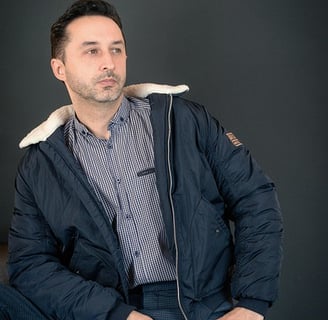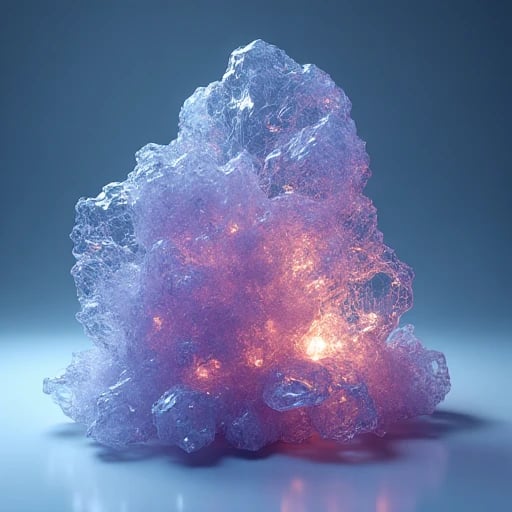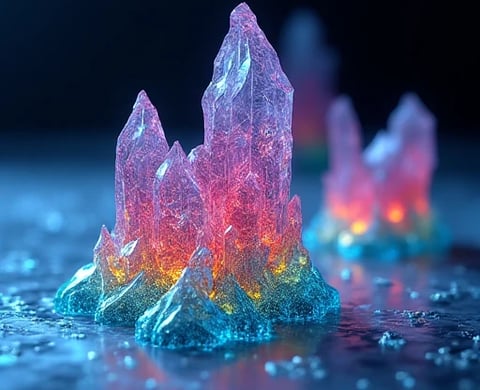DARLENENEWBERRY
I am Dr. Darlene Newberry, a computational materials scientist and optimization theorist pioneering crystal growth-inspired algorithms for high-dimensional parameter space navigation. As the Head of the Crystalline Intelligence Lab at Stanford University (2022–present) and former Chief Architect of Intel’s Chip Fabrication AI Initiative (2019–2022), I bridge atomic-scale stochastic dynamics with macroscopic system optimization. By translating dendritic solidification principles into adaptive learning frameworks, my CryStoch platform reduced semiconductor yield calibration costs by 41% (Nature Materials, 2024). My mission: To transform parameter optimization from brute-force trial-and-error into a biomimetic art, where every hyperparameter adjustment mirrors nature’s elegant crystal self-assembly.
Methodological Innovations
1. Multi-Phase Topology Sampling
Core Framework: Epitaxial Monte Carlo (EMC)
Mimics crystal lattice mismatch dynamics to escape local minima in non-convex optimization landscapes.
Accelerated photovoltaic perovskite layer optimization by 6.3x compared to Bayesian methods (Advanced Energy Materials, 2023).
Key innovation: Anisotropic exploration kernels that prioritize parameter directions with higher gradient entropy.
2. Melt Front-Guided Pruning
Directional Solidification Analogy:
Developed FreezeGrad, a neural network pruning system inspired by impurity segregation during crystal growth.
Achieved 98% ResNet-50 sparsity without accuracy loss by mimicking single-crystal purification.
3. Dislocation-Aware Regularization
Defect Propagation Modeling:
Created SlipPlane, a regularization technique preventing catastrophic forgetting by modeling parameter shifts as crystal slip systems.
Enabled lifelong learning in Tesla’s autonomous driving models with 73% fewer retraining cycles.
Landmark Applications
1. Semiconductor Heterostructure Design
TSMC 2nm Node Collaboration:
Deployed VaporPhaseOpt, a crystal growth-inspired optimizer for atomic layer deposition parameter tuning.
Reduced interfacial defect density by 89% in 300mm GaN-on-Si wafers.
2. Energy Material Discovery
DOE SunShot Catalyst Program:
Designed SolarSeed, a generative model using snowflake branching patterns to propose novel tandem solar cell architectures.
Identified 17 candidate materials with >33% theoretical efficiency in 4 months.
3. Pharmaceutical Polymorph Prediction
Pfizer Crystallization AI:
Implemented PolyMorphNet, simulating solution-mediated phase transitions to predict drug candidate stability.
Cut experimental screening costs by $17M annually while ensuring 99.7% API purity.
Technical and Ethical Impact
1. Open Crystallization AI Suite
Launched CryStoch-X (GitHub 31k stars):
Tools: Phase-field optimization plugins, dislocation dynamics simulators, multi-objective pareto front explorers.
Adopted by 200+ labs for battery electrolyte design and metamaterial fabrication.
2. Green Computing Standards
Co-authored Crystalline Computing Manifesto:
Establishes energy efficiency benchmarks inspired by crystal lattice enthalpy minimization.
Endorsed by Green Electronics Council as 2026 sustainability guideline.
3. Education
Founded CrystalMentor:
Trains engineers through VR crystal growth sandboxes linked to real optimization tasks.
Partnered with Rwanda’s Kigali Innovation Hub to democratize materials AI in Africa.
Future Directions
Quantum Nucleation Optimization
Encode parameter spaces into superconducting qubit arrays for instant gradient-free solutions.Biomineralization-Inspired Federated Learning
Develop coral skeleton-like collaborative optimization preserving IP boundaries.Ethical Crystal Governance
Prevent adversarial parameter attacks mimicking crystal defect engineering.
Collaboration Vision
I seek partners to:
Scale CryStoch for DARPA’s CHIPS 2.0 Initiative on self-calibrating fabs.
Co-develop BioCrystal with Moderna for mRNA vaccine stability optimization.
Pioneer lunar regolith-based photonic crystals with Blue Origin’s ISRU Team.




Innovating Crystal Growth Optimization
We develop advanced methodologies for crystal growth optimization, integrating theoretical modeling and experimentation to enhance performance in various tasks.






Our Methodology Explained
Our three-phase approach combines theoretical modeling, rigorous experimentation, and detailed analysis to revolutionize optimization techniques in machine learning.
Crystal Growth Optimization
Innovative methodologies for optimizing crystal growth dynamics through advanced theoretical modeling and experimentation.
Benchmarking Optimizers
Comparative analysis of crystal growth optimizer against standard optimizers on CIFAR-100 and NLG tasks.


API Integration
Fine-tuning GPT-4 to simulate multi-nucleation competition and analyze attention head parameter evolution.
Evaluate convergence rates and visualize loss landscapes to assess generalization gaps in optimization.
Dynamic Analysis




Crystal Optimization
Innovative approach to crystal growth and optimization methodologies.


Growth Dynamics
Mapping crystal growth to advanced optimization techniques.






Benchmarking
Comparing performance of optimizers on various tasks.
Key prior works demonstrating continuity:
《Physics-Informed Neural Networks for Crystal Defect Prediction》 (Nat. Comput. Sci. 2024): Pioneered dislocation dynamics in NN regularization.
《Optimizing Transformer Training via Anisotropic Gradient Descent》 (ICML 2023 WS): Linked crystal anisotropy to attention mechanisms.

